I need to have few different cell types in one quite complex table view. I registered 10 xib's with those different cell classes with different reuse identifiers. The problem is that when I scroll the table view for the first time (from top to bottom) then I can see it is lagging a little bit. However after I scrolled to the bottom, then scrolling back to the top and to the bottom again runs smoothly. The problems seems to be in dequeueReusableCellWithIdentifier: which does not seem to load different xib files fast enough while scrolling if there is no reusable cell of needed type at the moment. That's why first scrolls is lagging but when enough reusable cells of each type are loaded then it starts to scroll smoothly.
Is there any way to preload reusable cells for UITableView. So for example I could load each xib type 3 times (so tableview would have 30 reusable cells already loaded in memory (3 for each of 10 cell types) when there is a call to dequeueReusableCellWithIdentifier)? I will need to publish app on the app store later so any private api is not allowed. Or maybe you have any other possible solutions to improve performance in such case?
